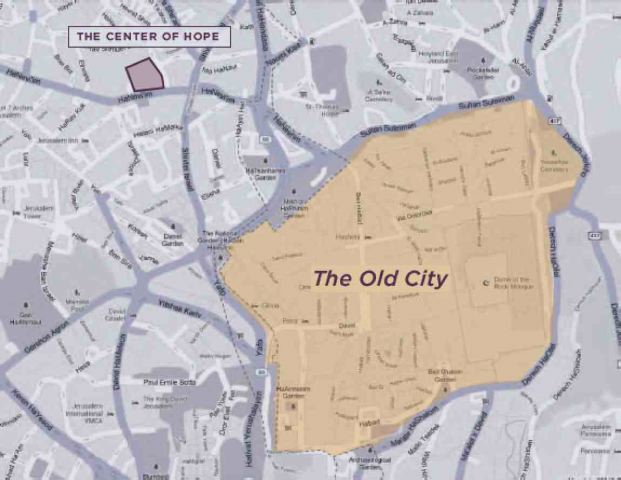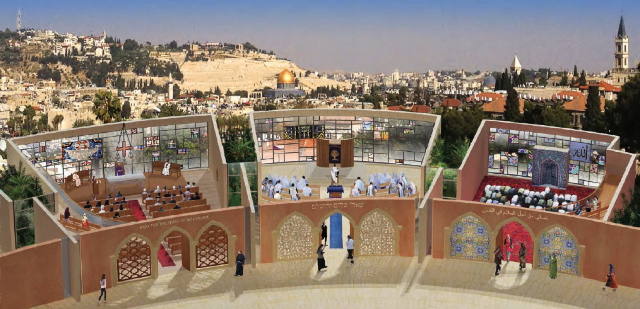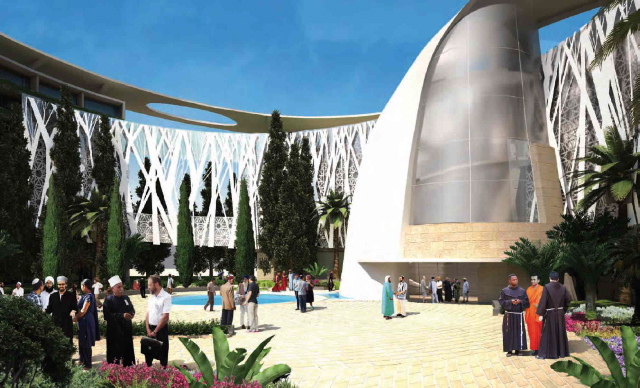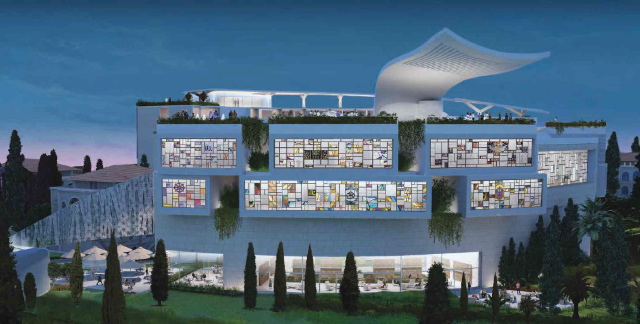The firm Lee H. Skolnick Architecture + Design Partnership has been selected to design the Center for HOPE, a new, 46,000-sf center in Jerusalem for religious education, cultural sharing and prayer among members of different faith traditions.
Like a United Nations for the religious world, the planned Center for HOPE is conceived by its backers as a place where people of all religions have a welcoming home and a place to help "bring about world-changing peace and harmony," according to The Elijah Interfaith Institute, the project's leader.
Support for the Center for HOPE has come from around the world from financial supporters as well as religious leaders including: the Dalai Lama; Cardinal Christoph Schönborn of Austria; Bhai Sahib Bhai Mohinder Singh of the U.K.; Grand Mufti Mustafa Ceric, of Bosnia; Chief Rabbi Jonathan Sacks of the U.K.; and Mata Amritanandamayi Devi of India.
According to Lee H. Skolnick, FAIA, the Center for Hope will be located on Prophets Street near Jerusalem's Old City, designed with symbolic meaning that reflects its redolent location.
"HOPE stands for 'House of Prayer and Education,' and the Center for HOPE experience is designed to unfold as a journey of peace and ascension," says Skolnick. "It is designed to provide beautiful prayer spaces, museum elements, art exhibition spaces, a library, a hospitality center, and study and lecture rooms for resident scholars."
The ribbonlike, sloping buildings curve around a verdant courtyard with reflecting pools, and feature green roofs and sustainable design elements. The mission of the new center, according to the Elijah Interfaith Institute, is as follows:
"Through prayer, education and cultural sharing, the Center of Hope seeks to bring about transformation in the lives of participants, increased understanding and appreciation between members of different faith traditions and a meaningful contribution to processes of peacemaking, community building and reconciliation between diverse faith communities in Jerusalem, thereby serving as a sign and model for religions and their possible relationships worldwide."
Related Stories
| Jul 18, 2014
Top Construction Management Firms [2014 Giants 300 Report]
Jacobs, Barton Malow, Hill International top Building Design+Construction's 2014 ranking of the largest construction management and project management firms in the United States.
| Jul 18, 2014
Top Contractors [2014 Giants 300 Report]
Turner, Whiting-Turner, Skanska top Building Design+Construction's 2014 ranking of the largest contractors in the United States.
| Jul 18, 2014
Engineering firms look to bolster growth through new services, technology [2014 Giants 300 Report]
Following solid revenue growth in 2013, the majority of U.S.-based engineering and engineering/architecture firms expect more of the same this year, according to BD+C’s 2014 Giants 300 report.
| Jul 18, 2014
Top Engineering/Architecture Firms [2014 Giants 300 Report]
Jacobs, AECOM, Parsons Brinckerhoff top Building Design+Construction's 2014 ranking of the largest engineering/architecture firms in the United States.
| Jul 18, 2014
Top Engineering Firms [2014 Giants 300 Report]
Fluor, Arup, Day & Zimmermann top Building Design+Construction's 2014 ranking of the largest engineering firms in the United States.
| Jul 18, 2014
Top Architecture Firms [2014 Giants 300 Report]
Gensler, Perkins+Will, NBBJ top Building Design+Construction's 2014 ranking of the largest architecture firms in the United States.
| Jul 18, 2014
2014 Giants 300 Report
Building Design+Construction magazine's annual ranking the nation's largest architecture, engineering, and construction firms in the U.S.
| Jul 7, 2014
7 emerging design trends in brick buildings
From wild architectural shapes to unique color blends and pattern arrangements, these projects demonstrate the design possibilities of brick.
| Jul 2, 2014
Emerging trends in commercial flooring
Rectangular tiles, digital graphic applications, the resurgence of terrazzo, and product transparency headline today’s commercial flooring trends.
| Jun 23, 2014
Berlin House of One will accommodate Muslims, Jews, and Christians
The building will rise on the ruins of a 13th-century Christian church that was damaged during WWII and eventually demolished.





















